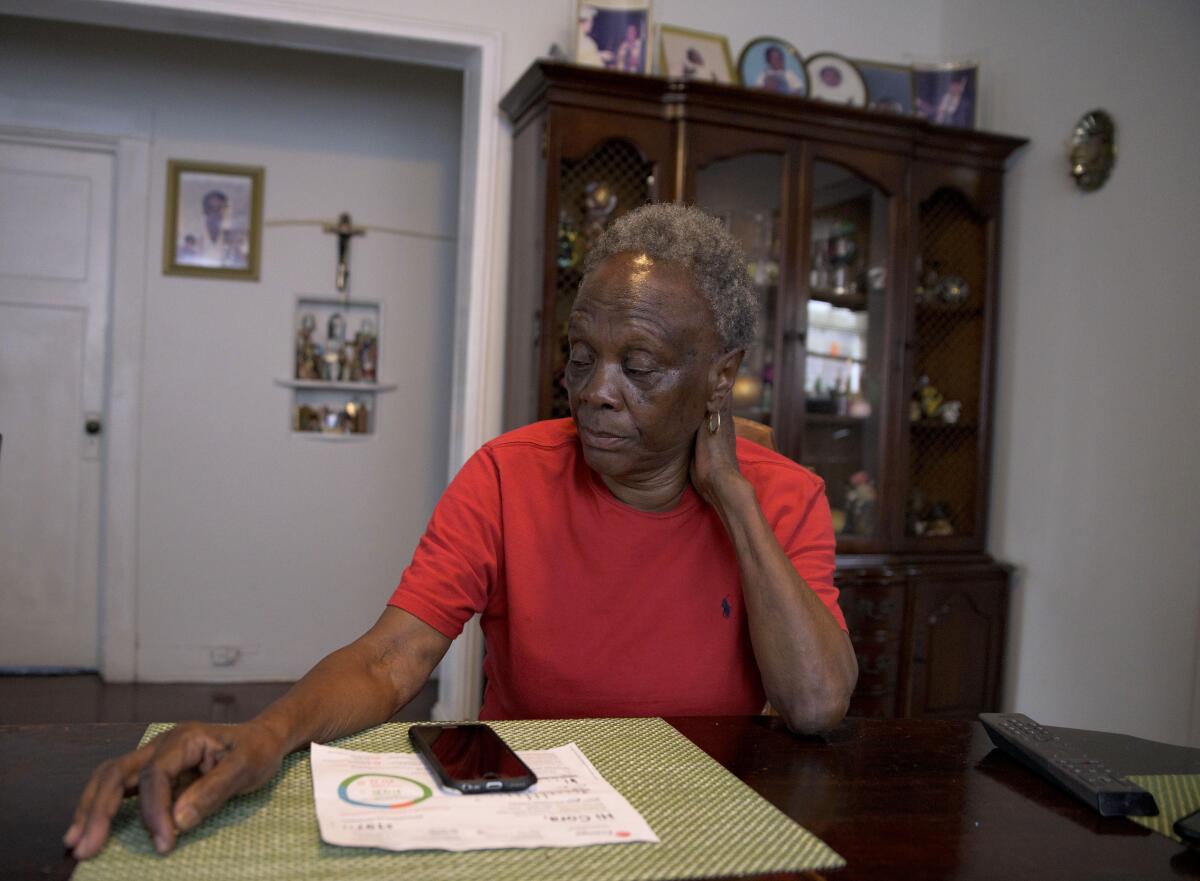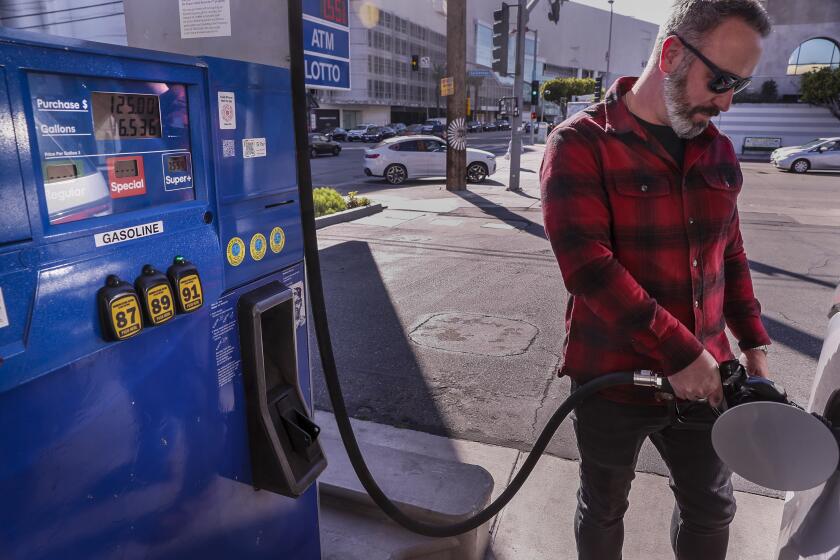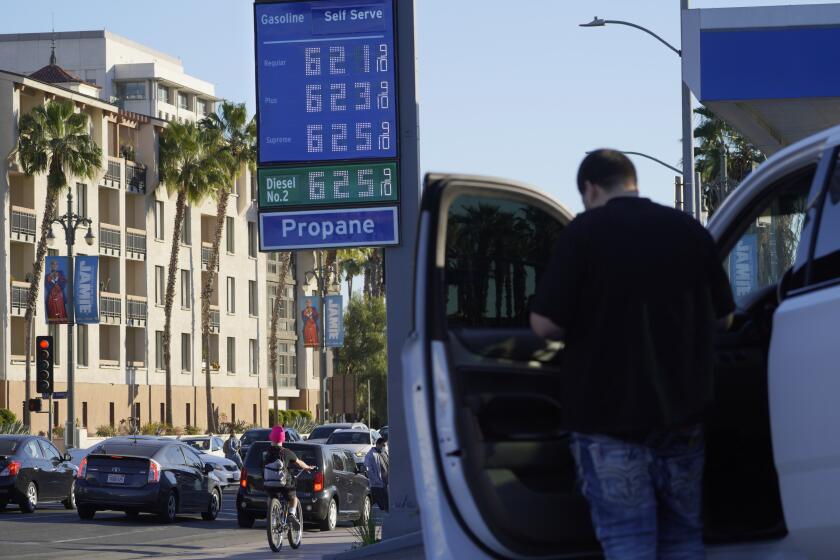Food or power: Energy bill late fees force tough choices

- Share via
NEW ORLEANS — Chris Kinney, a resident of Rapides Parish in central Louisiana, has seen his electricity disconnected eight times in nearly three years for falling behind on his energy bills to Cleco Power.
His family did everything they could think of to catch up: pawning possessions, accumulating vast bank overdraft fees, borrowing money and applying for energy assistance.
Somehow, Kinney’s outstanding balance kept growing.
While his electrical charges added up to about $6,400 from May 2019 through the end of 2021, Cleco Power also billed him more than $1,250 for being late on paying his bills, including late fees, reconnection charges and deposits.
“These charges keep piling up and there is no way to catch up. The financial strain was just insane,” Kinney said.
Americans paid a combined $561 million in late payment fees to electrical utilities in 2019.
But how much you pay depends on where you live.
An AP analysis of federal regulatory data found that several major utility companies in states like Louisiana, Mississippi, Kentucky, Florida and Maryland are charging customers late fees that are much higher than the national average.
Five power companies — Cleco Power, Kentucky Power Co. and three subsidiaries of Entergy Corp. — averaged more than $17.50 per customer in annual late fee revenues between 2011 and 2020. That’s three times the national average of $5.83 per customer in the same time period.
Inflation rose 7.9% in the 12 months through February. It comes amid Russia’s war in Ukraine, which is roiling energy markets.
The fees account for a small part of major energy companies’ overall revenue — less than one-quarter of a percent on average — but for the people who must pay them, they can be crushing.
Late fees typically punish customers who are least able to afford their utility bills to begin with. Poorly insulated homes and damage from natural disasters all contribute to poor residents spending larger portions of their paychecks on their energy bills. And Black and Hispanic households are more likely to experience energy insecurity and face utility disconnections.
For those who fall behind, it often means choosing between paying for power and being able to afford other necessities.
Mary Boyd, who is 83 and lives in New Orleans, said her expensive energy bills from Entergy — a major utility provider in Louisiana and three other Southern states — were causing her to choose between medication, and other expenses such as repairing the damage to her fence caused by Hurricane Ida.
“I am sick. I have high blood pressure, asthma and arthritis,” Boyd said. “Now just imagine this, this 300 and some dollars energy bill takes away from food and other things.”
::
Power companies, including Entergy and Cleco Power, say late fees are an important tool to encourage customers to pay their bills.
“Ultimately, late payment policies are put in place to help protect all customers from potential rate increases caused by uncollected payments,” Entergy spokesperson Jerry Nappi said in an email. The company doesn’t profit from late fees, he said.
But for some major utility providers, including Entergy, late payment fees make up far more of the companies’ revenues than average.
Nine companies, including Baltimore Gas and Electric, Central Hudson Gas and Electric, and Cleveland Electric Illuminating Co., derive more than 0.5% of their total revenue from late payment fee collection from 2011 to 2020 — double and even triple the national average of about 0.24%.
The Fed is expected to raise its benchmark interest rate soon in an effort to slow inflation. Here’s what it can do and what effects that might have.
Late fees are meant to cover the cost of collecting a bill, or the cost of disconnecting or reconnecting power to a residence.
They’re not meant to be punitive, said Odogwu Obi Linton, who sits on the board of directors of the National Assn. of Regulatory Utility Commissioners.
If a customer pays the bill quickly, the utility doesn’t have to carry or pursue collection of the debt, Linton said. This saves the utility company money on things like turnoff notices and making phone calls to collect late payments.
But advocates say the amount being charged doesn’t reflect expenses to power companies.
“Historically few, if any, of the late fees our utilities charge are cost-based,” said Kent Chandler, chairman of the Kentucky Public Service Commission.
Dan Kermode, a former policy advisor at the Washington Utilities and Transportation Commission, said that rules on late fee penalties in many states were decided long before the advent of new technologies and computer systems. Billing software and automated meters have made the cost of collecting late payments virtually zero for utilities.
In Louisiana, state regulations allow for up to a 5% penalty on late payments for all electric utilities. When asked for the rationale for why the late fees penalty was set at 5%, Public Service Commission press secretary Colby Cook said he could not comment because the rules on late fees, which were adopted in 1976, did not articulate the reasoning behind its adoption.
“This is what’s unique about late fees — these are charges which are not to collect costs, but to act as a disincentive for late payment,” Kermode said.
Some regulators and consumer advocates question whether late fees even work.
In Kentucky, the pandemic led to a moratorium on late fees for residential customers until the end of 2020. When looking back at the effects of that moratorium, the commission said, “late fees have little discernible effect on the timeliness of residential customer payments for utility service.”
::
Millions of U.S. households are facing heavy past-due utility bills, which have escalated in the year since the pandemic forced Americans hunkered down at home to consume more power.
Energy insecurity has affected Black and Hispanic households disproportionately, and the ongoing pandemic has made things even worse, according to Indiana University researchers in a paper they published in the science journal Nature Energy.
In New Orleans, an organization called Total Community Action helps disburse federal energy assistance, based on need. Nearly all of the group’s 7,000 clients who receive energy assistance are Black, even though only approximately 60% of New Orleans residents are Black.
In 2017, Black households spent 43% more of their incomes on energy costs than white households did, according to the American Council for an Energy-Efficient Economy. The council’s analysis, published in 2020, also found Native American households’ and Hispanic households’ energy costs accounted for much larger portions of their incomes than those of white households.
Older homes, including in low-income communities, generally are less energy-efficient in the first place — and floods or other disasters can damage those buildings to the point that they no longer qualify for government weatherization assistance.
“Homes in Louisiana have been impacted by hurricanes and by floods. It makes it so that we can’t come in and weatherize them because it needs a whole new roof,” said Lauren Holmes, who oversees energy assistance programs for the Louisiana Housing Corp. “That’s outside the scope of weatherization. We can’t go in and insulate an attic if you’ve got a 4-foot gaping hole in the attic.”
In neighboring Kentucky, most homes that apply for such assistance aren’t able to get it, either.
Kent Chandler, a member of the state’s Public Service Commission, said for every home the Kentucky Housing Corp. is able to weatherize using federal funds, roughly two homes cannot be retrofitted because of underlying health and safety problems that disqualify them from receiving that aid.
And weatherization isn’t the only thing affecting energy efficiency; how people heat their homes also plays a major role. In rural areas of Kentucky, many homes are heated with inefficient electric heating, which causes extraordinarily expensive bills in winter months, Chandler said.
Getting financial assistance to pay those bills, though, can be easier said than done for people who are unemployed or self-employed.
“When residents receive a disconnection notice, they only have a few days to get help and all the supporting documentation that is required before they are disconnected,” said Selton Jones, Total Community Action’s community service specialist for energy services. “If I play at a jazz bar and I’m just on the saxophone, I ain’t got no tax stubs.”
Those who get pensions, Social Security or other retirement income do have that documentation and are more able to get help paying their bills, but that still doesn’t always mean they won’t fall behind.
Carolyn Peters lives in New Orleans on a fixed retirement income and has received aid from the federal Low Income Home Energy Assistance Program. Her bill in February from Entergy New Orleans was almost $500, including late fees that had been charged in previous months.
When asked about how she was planning to pay her outstanding bill, Peters said she would have to give up another necessity like medication. “It’s a strain,” she said.
More to Read
Sign up for Essential California
The most important California stories and recommendations in your inbox every morning.
You may occasionally receive promotional content from the Los Angeles Times.













